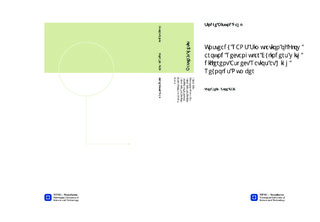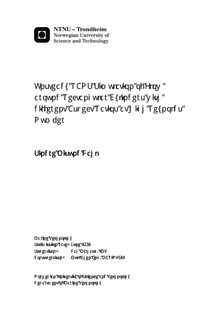| dc.description.abstract | Computational Fluid Dynamics (CFD) has been used to evaluate essential hydrodynamic quantities and flow structures around rectangular cylinders with different chord length to depth ratios (aspect ratios) at high Reynolds number. The mean drag coefficient, the root mean square (RMS) value of the lift coefficient, the Strouhal number and flow structures such as vorticity contours, streamlines, pressure distribution and mean streamwise velocity distribution have been predicted.A two-dimensional Unsteady Reynolds-averaged Navier-Stokes (URANS) model is used together with the standard high Reynolds number k-epsilon turbulence model. All simulations have been performed at Reynolds number (based on height) ReD = 2 × 10e5. The open source CFD code OpenFOAM is adopted in the study.The rectangular cylinder with aspect ratio 5 has been used for the purpose of validating the applicability of the 2D URANS model with the standard high Reynolds number k-epsilon turbulence model. Mesh and time step convergence studies have been performed. For the final refinement of the mesh the relative change for CD was less than 0.019%, the relative change for CLrms was less than 1.30%, while the relative change for the Strouhal number stayed unchanged. For the time step tests the relative change was less than 0.073% for CD and less than 0.80% for CLrms, while the Strouhal number stayed unchanged. Hence, a case with sufficient numerical accuracy was found. The hydrodynamic quantities were found to be: CD = 1.1008, CLrms = 0.2760 and St = 0.1221. The results were in good agreement with the published experimental and numerical results. Small deviations were found for the pressure distribution over the cylinder surface. It was concluded that the present numerical model is capable of predicting the flow around the rectangular cylinder with B/D = 5 in both quantitative and qualitative manners.Grid convergence studies and time step tests have been performed for rectangular cylinders of aspect ratio 1, 2, 3, 4 and 5. The present simulations were able to provide satisfactory spatial and time resolutions for all the five aspect ratios at ReD = 2×10e5. The results calculated have reproduced the physics in a reasonable manner. The drag coefficients were found to be in the range of 1.1 < CD < 2.1, the RMS values of the lift coefficients were in the range of 0 < CLrms < 1.4, while the Strouhal numbers alternated between 0.1221 and 0.1373. Reattachment was present for aspect ratio 4 and 5. The mean drag coefficients were found to be in a good agreement with both 2D and 3D numerical simulations, and experiments found at lower Reynolds numbers, while disparities were present for CLrms and St.Published work at ReD = 2 × 10e5 are only found for aspect ratio 5. For the rectangular cylinders with aspect ratio 1, 2, 3 and 4 the lack of published work at the same Reynolds number has made it difficult to perform a detailed validation of the model. More experimental data are required for a further validation study. From the data, it may be concluded that the results from the present study can be useful for engineering design purposes. | nb_NO |

